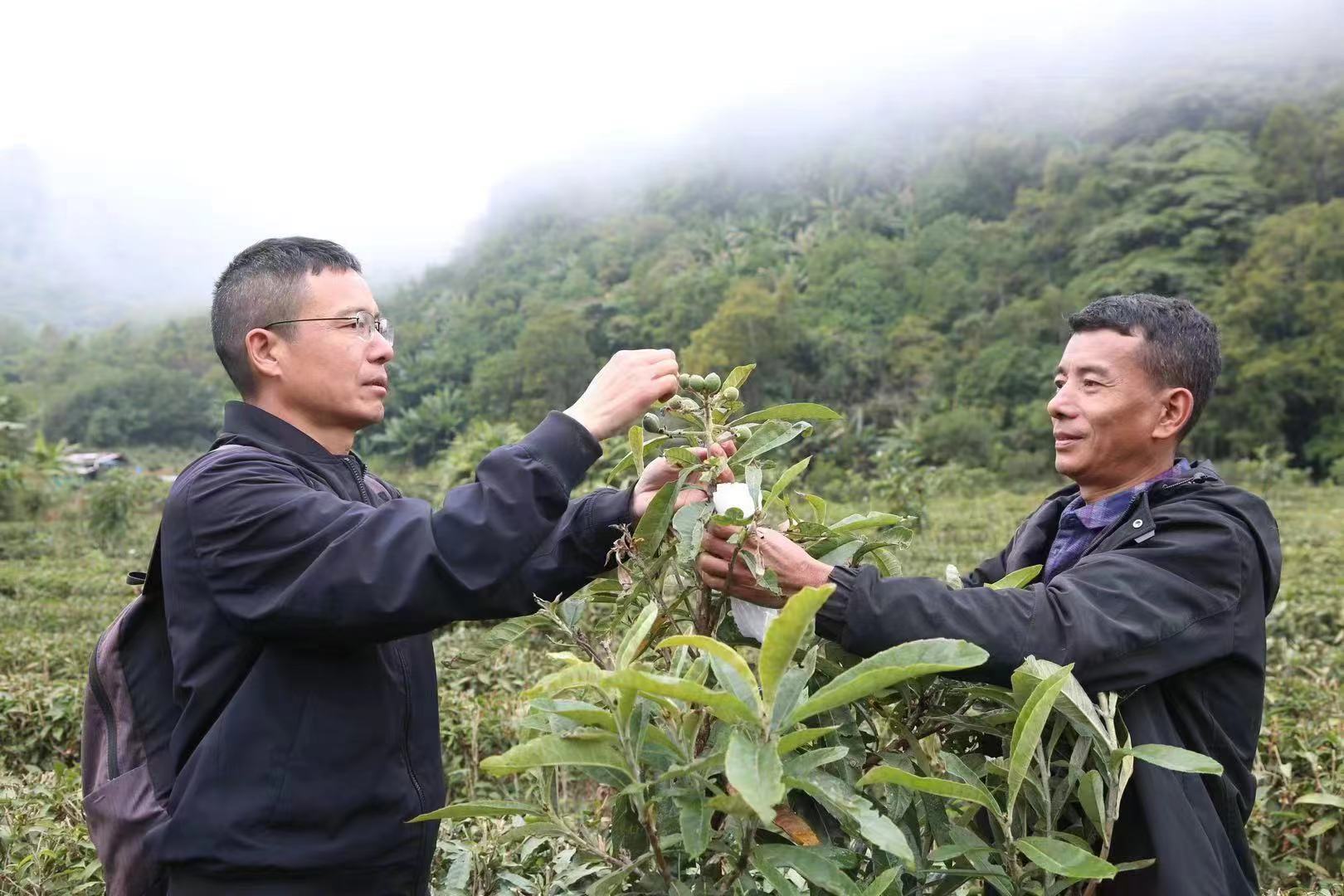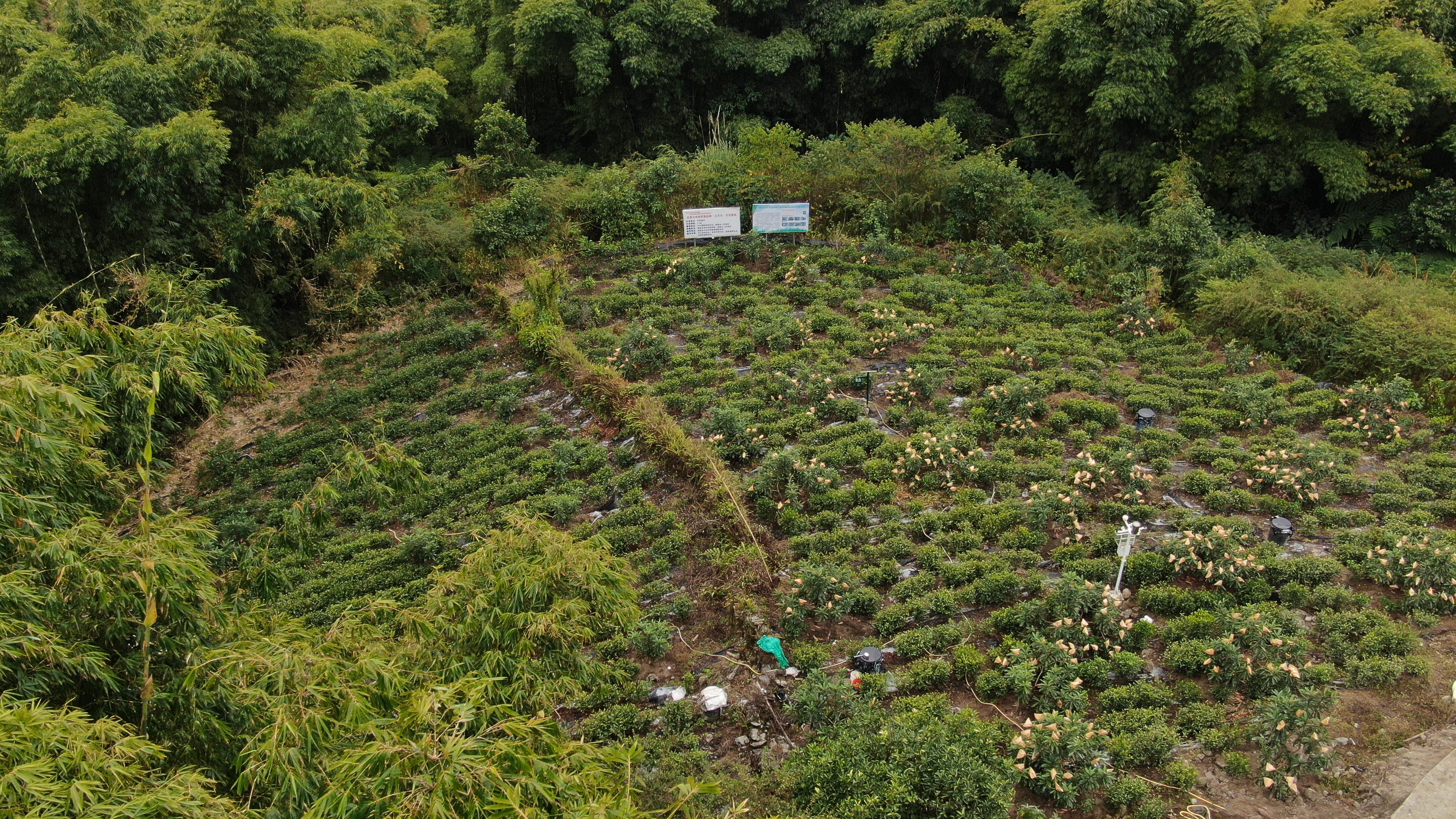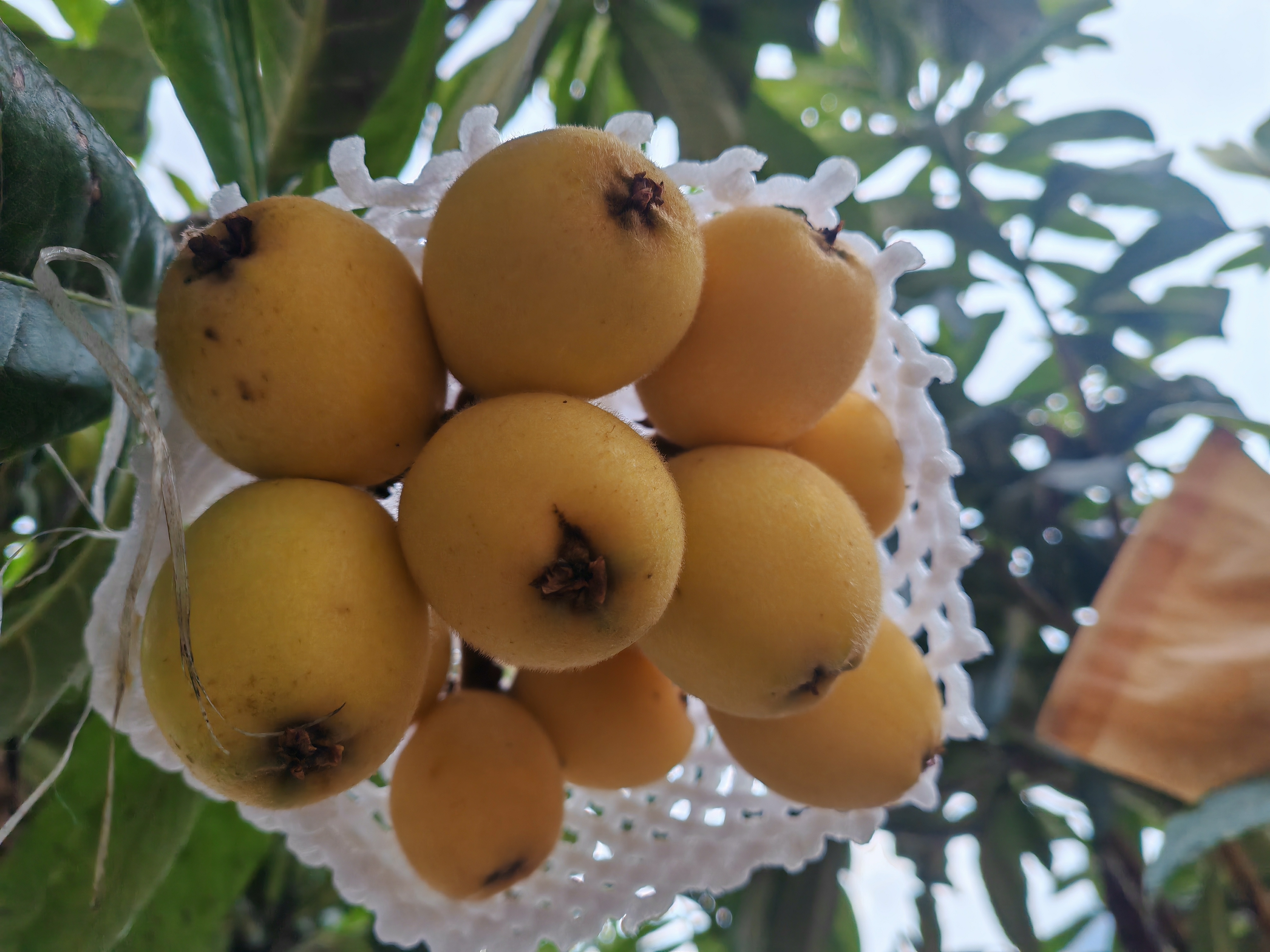By Liu Fang, Xie Xiaochun, Zhi Xinghua Source:xzxw.com 2024-03-05
Before Norbu Yangzom left for Beijing to attend the annual Two Sessions, she decided that something very special would accompany her on the trip: white loquats and tea.
"More people need to know about our beautiful hometown," said Norbu Yangzom, a deputy to the 14th National People's Congress, as she talked of the local delicacies she packed in her bags.
The reason for her pride is that the white loquat has developed into a lucrative cash crop for Metok County in southwest China's Xizang Autonomous Region over the past years.

Jiang Fan (L), deputy director of Metok's Agriculture and Rural Bureau wraps the loquats with a local villager, Metok County, southwest China's Xizang Autonomous Region. /xzxw.com
Walking in a local tea garden, Jiang Fan, deputy director of the county's agriculture and rural bureau, showed off various varieties of white loquat trees planted among tea trees, as he enthused about their versatility and the ingeniousness of the project.
"These are March loquat that ripen in early spring. The fruit is sweet and delicious, the leaves can make loquat paste, and you can turn the flowers into tea."
Yet the treasure of these plants was at first not known to locals. In the early days, there were wild ancient loquat species and red loquats in Metok, and almost every house there have loquat trees growing around them, but most of the fruits were small, ugly and bitter.
In November 2021, the county government decided to do something to tackle the problem. It formed a partnership with the Fujian Academy of Agricultural Sciences, aiming to bring in white loquat trees and helpful technical resources. About two months later, a new species of loquat took root in Metok.

A loquat planting garden in Metok County, southwest China's Xizang Autonomous Region. /xzxw.com
"When we first planted these trees, we had to use a ruler to measure the loquat pits every day," Jiang said. As much as 30 kilograms of fertilizer is needed for each white loquat tree, which required big holes and a lot of digging work.
"At that time we were all trying to cut corners, so the pits we dug were much too small, and many had to be dug again until they were sufficiently adequate," a local villager, Wangdrak, said.
Speaking of the first harvest last year, Gao Rong, a village official, said: "The loquat tree doesn't bear many fruits, but they are really big, sweet and tasted great. We're convinced that this new variety would sell very well."
However, most villagers were reluctant to to learn how to grow the new fruit as they viewed the planting technique a waste of time.
"So we decided that what we needed to do was not only to plant trees but to 'plant' people as well," Gao said. "That would give us the kinds of skills no one could take from the county, which in turn would benefit people financially as they learned about scientific planting.”

Ripe loquats hang from a tree branch, Metok County, southwest China's Xizang Autonomous Region. /xzxw.com
The plan has paid off, Wongdrak has been among those who have gained experience in growing white loquat. In addition, 15 local white loquat planting technicians are working in the county.
Early this year, a village in Metok sold more than 1,900 white loquat branches to Xizang Border City Industry Development Co., Ltd., earning nearly 100,000 yuan ($13,900).
Fruit tree branches such as those of the March loquat can be used to graft or breed new loquat plants, so horticultural companies and growers are delighted to buy them. Another two villages recently sold white loquat branches at 50 yuan each, bringing in more than 100,000 yuan, too.
"Now locals are lining up to get training on planting techniques," Gao said.
(Editor: Sun Yue)
Copyright © Xizang Daily & China Xizang News All rights reserved
Reproduction in whole or in part without permissions prohibited
Index Code: 藏 ICP 备 05000021 号
Producer: Xizang Daily International Communication Center